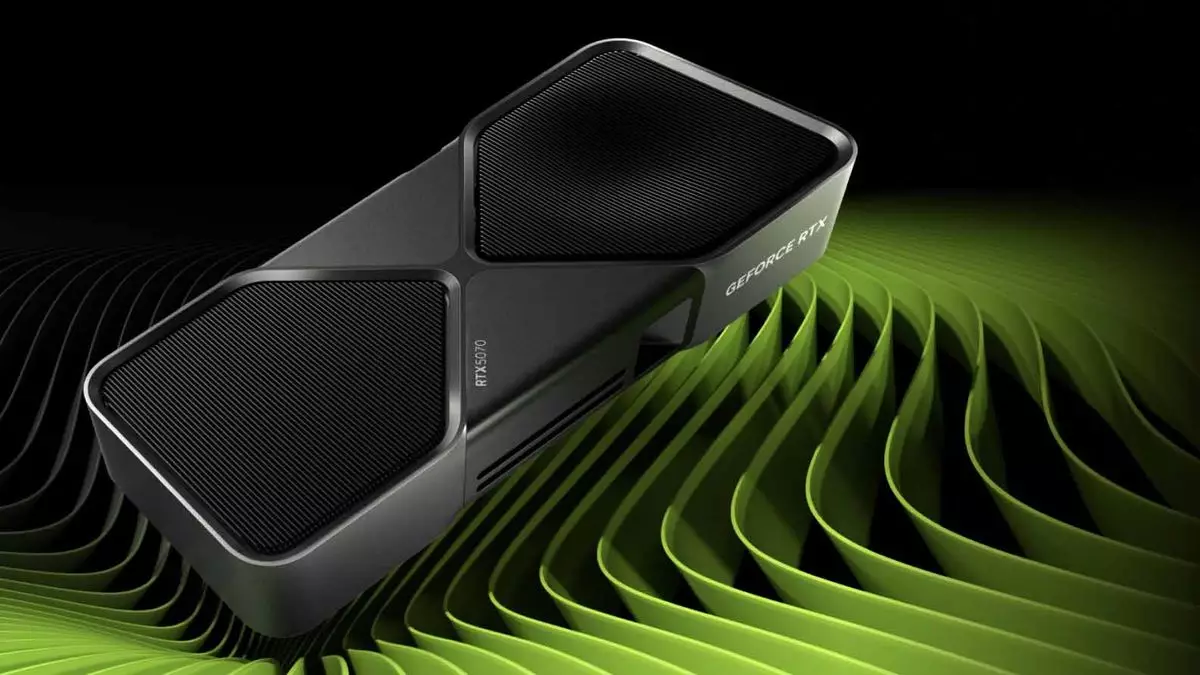The unveiling of the Nvidia GeForce RTX 5070 at CES 2025 has certainly garnered significant attention within the tech community, sparking debates about its performance, capabilities, and overall value. Described as the least powerful card in the newly announced 50-series, it appears on the surface to be overshadowed by its more robust counterparts. Yet, with a price tag of $549 and claims of delivering performance akin to the RTX 4090, one can’t help but wonder if this GPU might eclipse expectations, or if it ultimately falls short when scrutinized.
Nvidia’s CEO, Jen-Hsun Huang, made provocative statements during the launch, declaring that the RTX 5070 would deliver performance on par with the RTX 4090. Such assertions naturally raise eyebrows. After all, the RTX 4090 has long been revered as the pinnacle of gaming graphics technology. However, journalist Ben Hardwidge from PCGamesN was given an exclusive opportunity to assess the RTX 5070’s capabilities firsthand, particularly through its performance in the game “Marvel Rivals.” The results of these initial tests reported the RTX 5070 achieving frame rates surpassing those of the RTX 4090, running at around 240 frames per second compared to the RTX 4090’s average of 180 fps.
Yet, while these numbers seem impressive, the context in which they were achieved must be carefully evaluated. A key factor in this performance boost is the introduction of Nvidia’s latest technology—DLSS 4 Multi Frame Generation. This feature employs artificial intelligence to create additional frames using the game’s real-time data, fundamentally altering the traditional rendering landscape. But does this innovation genuinely equate to raw power?
Nvidia’s strategic pivot towards AI-driven graphics rendering has been nuanced over the years. Huang’s comments regarding the inseparability of AI in modern graphics underline a significant shift in how GPU performance metrics are defined. In essence, DLSS 4 allows for the generation of up to three artificial frames in between actual rendered frames, providing the impression of greater frame rates and smoother gameplay.
However, one must ponder whether this technical prowess can be genuinely considered equal to the hardware capabilities of the RTX 4090 without DLSS 4 in play. The comparison presented by Hardwidge, praiseworthy as it seems, invokes questions regarding its validity since it involved two systems running different rendering technologies—this brings into focus the risk of bias borne from the stunning performance of optimized titles like “Marvel Rivals.” It soon becomes clear that leveraging DLSS 4 might be a requirement to fully realize the RTX 5070’s potential, raising doubts about its versatility across varying genres and titles.
Despite Nvidia positioning the RTX 5070 as a formidable player in the market, the disparities in performance across different gaming contexts could mean the GTX 5070 appeals chiefly to those willing to invest in the latest software technologies alongside their hardware upgrades. Enthusiasts should be cautious and vigilant, recognizing that the gaming landscape frequently shifts based on software optimization and real-world testing.
Fundamentally, while the RTX 5070’s price point suggests an attractive deal for performance levels once reserved for more expensive options, potential buyers must await comprehensive testing across various games and settings for an all-encompassing evaluation. Nvidia’s own admission underscores this notion, hinting at the RTX 5070’s stellar performance being particularly well-suited to optimized titles, without guaranteeing that this holds true across the board.
As the RTX 5070 emerges as an intriguing option in Nvidia’s GPU lineup, it invites the community to ponder the future of gaming graphics technology. Will the dependency on AI rendering become the norm? Could this signify a paradigm shift where functional power becomes secondary to the perceived performance achieved through sophisticated algorithms? Only time will tell. But for now, as the gaming world anticipates the official launch in February, the conversation surrounding the RTX 5070 promises to remain vibrant and filled with unresolved questions, leaving enthusiasts and gamers alike poised for potential innovation—a mix of excitement and skepticism hanging in the air.


Leave a Reply